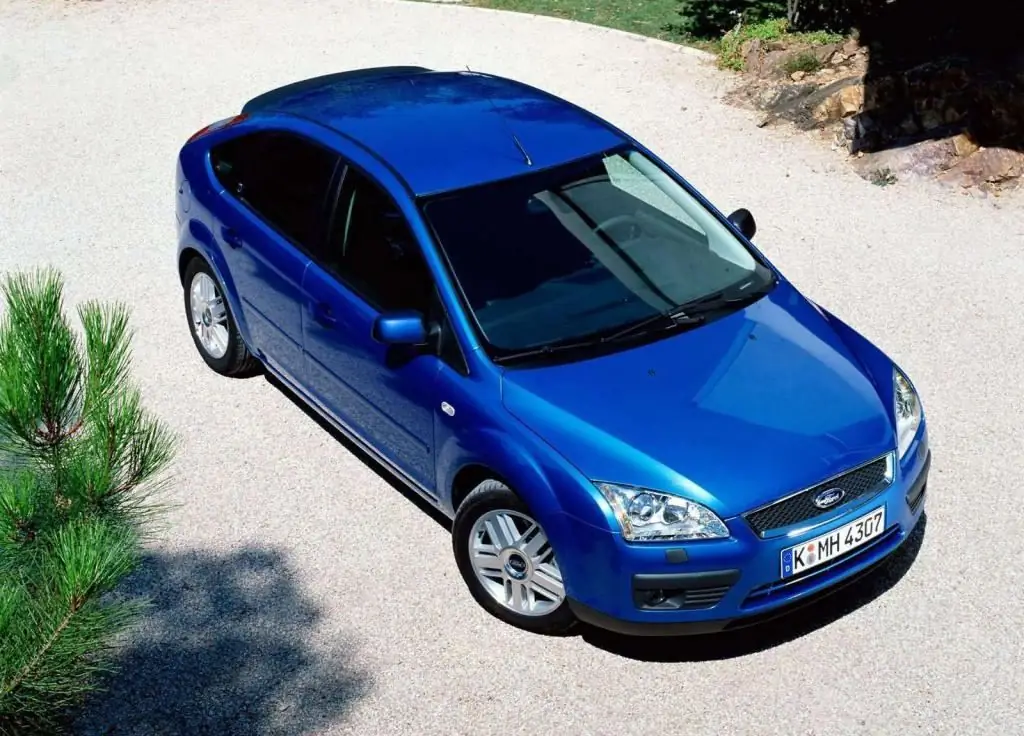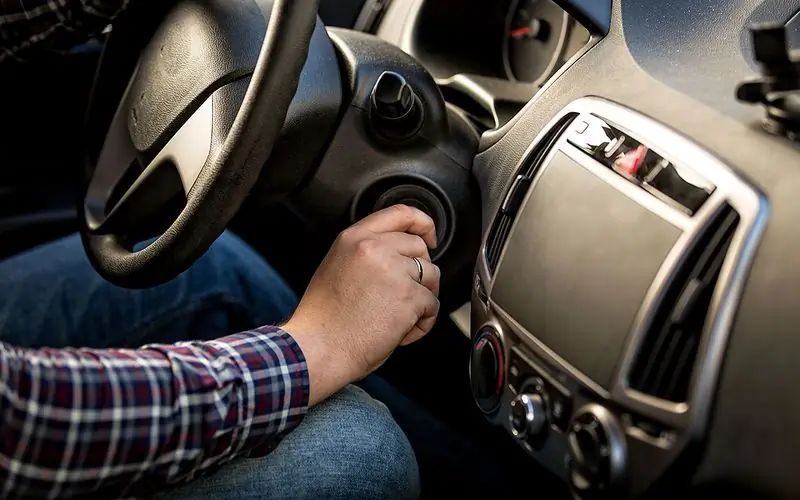2025 Author: Erin Ralphs | [email protected]. Last modified: 2025-01-22 21:14:16
The tracked snow and swamp vehicle "Ural-5920" first rolled off the conveyor of the automobile plant in Miass in 1985. The main purpose of the conveyor was the transportation of goods in particularly difficult terrain, including swampy and snowy areas, at air temperatures from -40 to +60 degrees Celsius.
Description of the all-terrain vehicle
The car was a structure assembled according to the so-called wagon scheme, that is, when the driver and passenger in the cab of the car are located directly above the front wheels (in this case, the tracks).

At the same time, the "Ural-5920" was structurally divided horizontally into two parts:
- The frame with the engine, cabin, cargo platform and transmission elements installed on it.
- The undercarriage, which is two separate caterpillar trucks, on which the frame with all its components was installed.
Drivability of the car, as well as the ability to overcome largecrossings of the terrain was provided by the possibility of turning carts around a vertical axis, as well as their ability to move (swing) in the longitudinal direction.

The torsion-type suspension provided a good ride smoothness for the snow and swamp vehicle. The track rollers were wheels with tires, the cavity of which was filled with a spongy mass instead of air. The tracks themselves were reinforced with steel cables to increase strength and reduce stretching.
Ural-5920: specifications

- The maximum weight of transported goods was 8 tons.
- The mass of the all-terrain vehicle is 22.5 tons.
- Average specific pressure on the soil surface when the machine is fully loaded is 0.22 kg/cm sq.
- The speed limit on hard ground is 30 km/h.
- The average fuel consumption per 100 km is 100 liters.
- Climbability - 58%.
- The depth of the water barrier to be overcome is 1.8 meters.
- Developed power of the power unit - 210 l / s.
"Ural-5920" turned out to be a rather successful machine, often surpassing foreign counterparts in its characteristics. But the merit in this only partially belongs to the designers of the Ural Automobile Plant. In fact, the inventors of the all-terrain vehicle were completely different people.
The start of work on the all-terrain vehicle
The question of creating a new snow and swamp vehicle with a good carrying capacity arose back in 1960. At that time, active development of uninhabited territories began in the USSR, and the purchase of transporters abroad was unprofitable due to their high cost. Therefore, the top management decided to create a domestic all-terrain vehicle. The designers of NAMI received the corresponding instruction. And to speed up the work, several copies of imported machines were still purchased, so to speak, for a sample. At the same time, the domestic all-terrain vehicle, in addition to the fact that it should not be inferior in terms of characteristics to the "foreigners", it still needed to be unified as much as possible under the existing serial vehicles. This would allow the use of already produced components and assemblies in the production of an all-terrain vehicle. In addition, this would shorten the process of training drivers for the new transporter, due to the identity of the components of the new and production models. That is, any driver with experience in operating conventional trucks could drive the car.
The development of the all-terrain vehicle began in 1970, and by 1972 an experimental snow and swamp vehicle appeared, which received the index NAMI-0157 BK.
Ural-5920: factory models and prototypes

NAMI-0157 BK was created on the basis of the serial URAL-375D. Almost everything that was attached from above, starting with the engine and ending with the details of the frame and cab, was borrowed from the base URAL. Drive axles were taken from ZIL. The original design solution was rubber rollers and sprockets, which were located in pairs of caterpillar trucks.
Tests of the conveyor showed that the direction inwhich the development engineers moved when creating the snow and swamp vehicle, right. After some improvements, two more samples of all-terrain vehicles appeared, with NAMI-0157M markings. It was NAMI-0157 that became the prototype of the Ural-5920 snow and swamp vehicle.

In 1974, the Ural Automobile Plant was given all the documentation for the developed machines in order to establish their serial production.
But before putting the snow and swamp vehicle on the conveyor, the plant produced five experimental vehicles "Ural-NAMI-5920" for testing during tests in the Tyumen region. The conditions in which the prototypes were placed soon revealed a number of shortcomings, namely the two-row arrangement of the rollers led to the clogging of the space between them with dirt. The consequence of this was the descent of the caterpillar track. Also, the tests revealed an insufficient amount of clearance, which reduced the cross-country ability of the all-terrain vehicle. As a result, instead of the planned 6,000 km of run, the prototype cars passed only half, after which they were returned to the factory for revision.
The following samples with eliminated deficiencies and completely ready for serial production received the factory index "Ural-5920".
Failed series
With the advent of the 80s, the country's economy began to decline, and the planned mass production of snowmobiles never happened. It turned out that snowmobiles are not in high demand. None of the advantages of the Ural-5920, the price of the car, which was significantly lower than the cost of analogues, did not attract buyers. Claimed annual volumein 8000 cars (which was planned in the 70s), in the 80s they were limited to 150 pieces. As a result, the conveyor was removed from the conveyor production, transferred to the slipway, which was very expensive. As a result, this led to a complete h alt in the production of Ural-5920.
Return of the snow and swamp vehicle
Production of "Ural-5920" resumed only in 2002, though not in Miass, but in Yekaterinburg, at the plant of special vehicles "Continent". The plant engineers made a number of changes to the basic design that improved the operational characteristics of the conveyor. The all-terrain vehicle engine was replaced with a more powerful YaMZ-238 M-2. The swivel mechanism received new hydraulics. Caterpillars were also made from modern materials, increasing their strength, and, accordingly, their service life. All these changes increased the carrying capacity of the machine, while the pressure coefficient on the soil surface did not change. The plant began to produce all-terrain vehicles in various variations and layouts, which increased the scope of its application. Thus, thanks to the efforts of "Continent" "Ural-5920" revived anew.
Recommended:
Why does a car need rear lights?

Absolutely every modern car is equipped with illumination and signaling devices, which are located inside and outside the vehicle. If all these devices are combined into one, you can get a whole lighting system. In today's article, we would like to talk about such an important element as taillights
Why do you need a car? Does it solve the tasks set for today, or does it add new ones?

Since humanity invented the wheel, more and more vehicles have been appearing, for which in some cases this very wheel is no longer even needed. Why do we need a car in our time?
GAZ-47 - a car that does not need roads

GAZ-47 - the first domestic tracked all-terrain vehicle. The first domestic car that will pass where the tank gets stuck. Conveyor Specifications
Ford Focus-2 trunk does not open. How to independently open the fifth door and make repairs. How much does it cost to work in a service center

"Ford Focus-2" has received wide popularity not only in the Russian market, but also in European countries, in the US, China and India. Motorists are happy to buy sedans, hatchbacks, station wagons from Ford because of their reliability, ease of repair and comfortable suspension. However, with a mileage of more than 100,000 kilometers, the following malfunction often occurs: the trunk of the Ford Focus-2 does not open. The problem manifests itself unexpectedly and is noticed both on restyled and pre-styling models
"Opel Astra" does not start, the starter does not turn. Causes of the malfunction and troubleshooting

The fashionable, stylish car of the German car industry fell in love with consumers. Problems happen with any technique, and you just have to be ready for it. One of the problems often discussed on the Opel Astra forums is that it does not start, the starter does not turn

